Discover the ultimate city with the highest number of UNESCO World Heritage Sites. Prepare to be captivated by the rich tapestry of cultural wonders awaiting you. Nestled in the embrace of history, this enchanting location boasts an abundance of UNESCO treasures.
Step into a realm where time stands still and explore the magnificence of the UNESCO World Heritage sites, meticulously preserved by the United Nations Educational, Scientific and Cultural Organization. From the majestic wonders of Beijing to the ancient allure of Córdoba, these cities are veritable treasure troves of historical significance.
Yet, it's not just about quantity; it's about the sheer magnitude of marvels that await. Delve into the heart of Rome or Mexico City, where every step reveals a multitude of captivating UNESCO gems, condensed into singular sites.
Embark on an unforgettable journey to these 8 breathtaking destinations, where the world's best UNESCO locations come alive, offering a glimpse into the timeless beauty of our shared heritage. Prepare to be spellbound.
10 Best City With The Highest Number Of UNESCO World Heritage Sites:
Here are 8 top destinations for checking off some of the best UNESCO locations. As we delve into these remarkable locations, we not only honor our shared heritage but also deepen our understanding of the world and our place within it.
Córdoba, Spain:
Cordoba indeed holds four inscriptions on the UNESCO World Heritage List. As you explore these remarkable locations, you become a witness to the extraordinary achievements of humanity, gaining a deeper appreciation for the interconnectedness of our shared past and the importance of preserving these priceless treasures for future generations. Lose yourself in the mesmerizing blend of cultures at the awe-inspiring Mosque-Cathedral, a masterpiece of Islamic and Christian architecture.
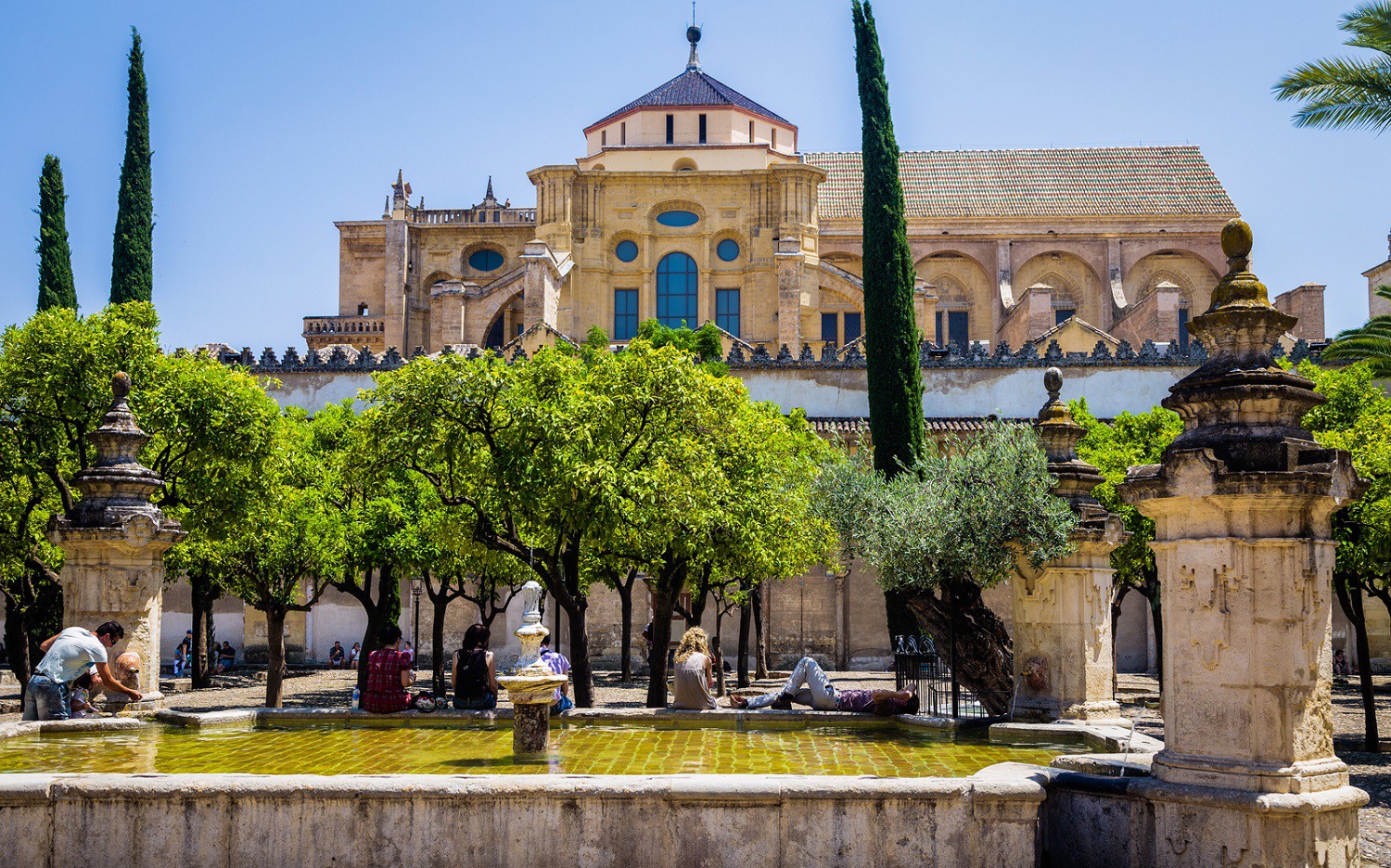
Wander the enchanting streets of the Jewish Quarter, where medieval charm and Sephardic heritage intertwine. Feel the grandeur of Alcázar de los Reyes Cristianos, the fortress-palace that witnessed the triumphs and tribulations of kings. Be transported to a bygone era at Medina Azahara, the magnificent ruins of an ancient Islamic city.
With each step, Córdoba's UNESCO treasures unravel tales of resilience, artistic brilliance, and cultural fusion. Prepare to be spellbound as you unravel the secrets of these sacred and historic sites, leaving you with memories to cherish and stories to share. Discover Córdoba, where the past dances with the present.
List of UNESCO World Heritage Sites in Córdoba, Spain:
01. Mosque-Cathedral of Córdoba (1984):
This architectural marvel is a fusion of Islamic and Christian influences, featuring stunning arches, intricate mosaics, and a rich history spanning centuries.
02. Historic Quarter of Córdoba (1994):
The surrounding historic quarter showcases the city's unique blend of Roman, Islamic, and Christian heritage. Its narrow streets, picturesque courtyards, and charming squares offer a glimpse into Cordoba's rich past.
03. Festival of the Patios (Courtyards) (2012):
This cultural tradition showcases the beauty of Cordoba's traditional courtyards, adorned with colorful flowers, intricate tilework, and a harmonious combination of architecture and nature.
04. Medina Azahara (2018):
Located on the outskirts of Cordoba, Medina Azahara was once a lavish palatial city that served as the seat of power during the Caliphate of Cordoba. Its ruins highlight the architectural and cultural achievements of the Islamic civilization.
These four UNESCO World Heritage Sites in Cordoba, Spain, stand as testament to the city's historical, architectural, and cultural significance, inviting visitors to delve into its fascinating past.
Suggested to Read: Visit the USA: Home of Beautiful UNESCO World Heritage Sites!
Beijing, China:
Discover the timeless wonders of Beijing, China's UNESCO World Heritage Sites! From the majestic Great Wall to the enchanting Forbidden City, prepare to be transported to an era of ancient grandeur and cultural marvels. Traverse the iconic Summer Palace, where imperial gardens and tranquil lakes create a serene oasis. Immerse yourself in the exquisite Temple of Heaven, where emperors once sought celestial guidance.

Wander through the historic hutongs, narrow alleys lined with traditional courtyard homes, offering a glimpse into Beijing's rich past. Marvel at the intricate craftsmanship of the Ming Tombs, where emperors rest in eternal splendor. Whether you seek architectural brilliance, artistic mastery, or spiritual enlightenment, Beijing's UNESCO World Heritage Sites represent the city's rich history, culture, and architectural heritage.
They offer visitors a glimpse into China's imperial past and provide an opportunity to appreciate the remarkable achievements of ancient civilizations.
List of UNESCO World Heritage Sites in Beijing, China:
01. Forbidden City:
Also known as the Palace Museum, the Forbidden City served as the imperial palace during the Ming and Qing dynasties. It is a remarkable architectural complex featuring magnificent halls, courtyards, and gardens.
02. Temple of Heaven, Beijing:
This sacred site was used by emperors to perform rituals and prayers for good harvests during the Ming and Qing dynasties. The Temple of Heaven's unique architectural design and cultural significance make it a must-visit.
03. The Summer Palace:
A stunning imperial garden, the Summer Palace is renowned for its picturesque landscapes, pavilions, temples, and the tranquil Kunming Lake. It offers a glimpse into the opulent lifestyle of Chinese emperors.
04. The Great Wall:
The Great Wall is an iconic symbol of China's ancient civilization, spanning over 13,000 miles and dating back more than 2,000 years. It is a monumental feat of engineering and a testament to human ingenuity.
05. Imperial Tombs of the Ming & Qing Dynasties:
Located outside Beijing, the Imperial Tombs are the final resting places of emperors and their families from the Ming and Qing dynasties. These tombs are exquisite examples of imperial mausoleum architecture.
06. Peking Man Site:
This archaeological site at Zhoukoudian is significant for the discovery of ancient human fossils dating back to the Paleolithic era. It provides valuable insights into human evolution and early human history.
07. The Grand Canal:
Although not entirely within Beijing, the Grand Canal, a vast waterway system, passes through the city. It has been crucial for transportation and irrigation for centuries and is considered a remarkable engineering achievement.
Rome, Italy:
Of the 55 UNESCO sites in Italy, Rome shines as the epitome of cultural heritage. As the capital of Italy and once the majestic capital of the Roman Empire, Rome stands as a testament to the grandeur of antiquity. Its streets hold the echoes of history, with extraordinary archaeological areas seamlessly integrated into the vibrant urban fabric.
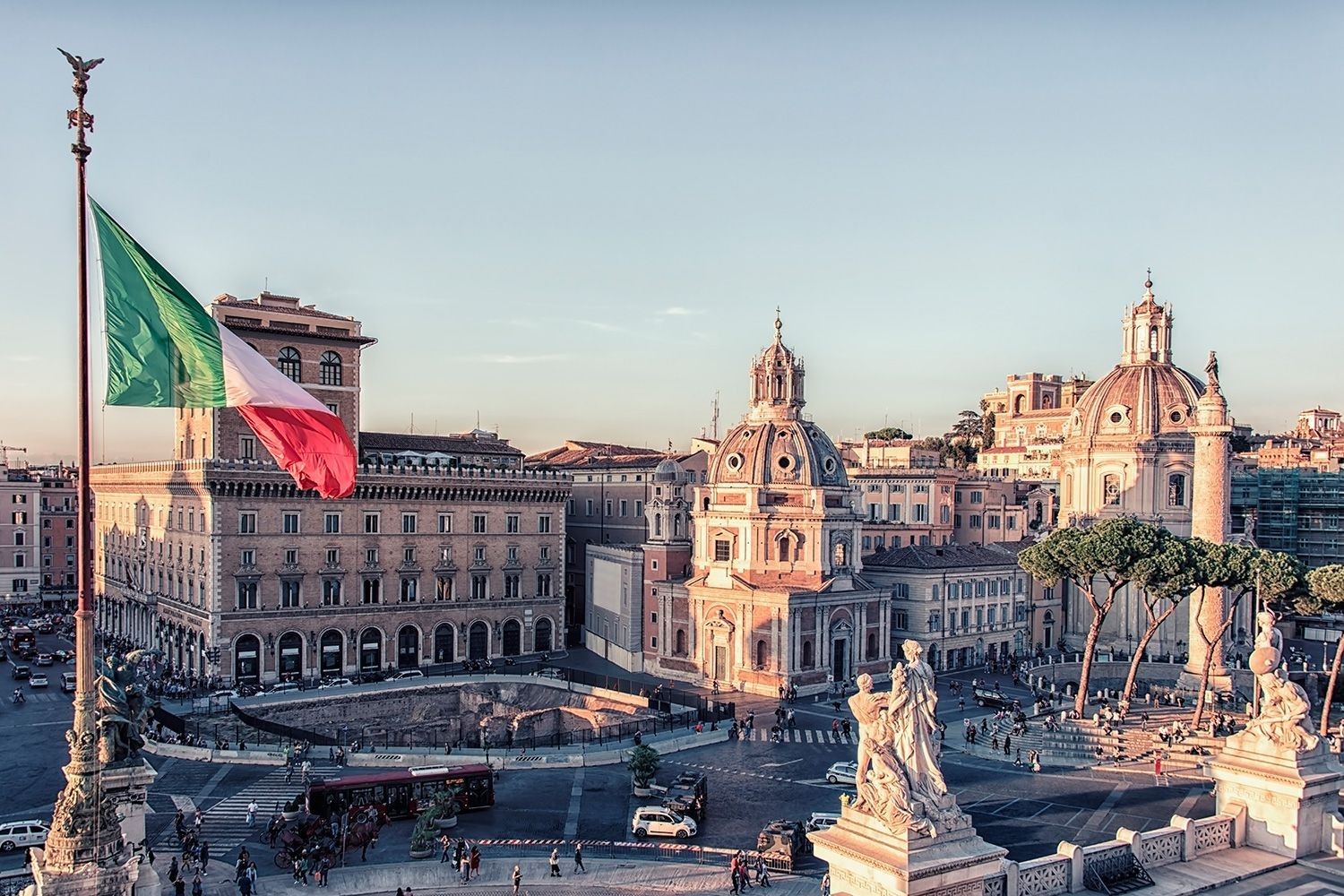
Rome's UNESCO sites bear witness to unparalleled artistic achievements, accumulated over a staggering span of nearly 3,000 years. Majestic monuments of antiquity, meticulously preserved, invite visitors to step back in time and immerse themselves in the awe-inspiring remnants of a glorious past.
List of UNESCO World Heritage Sites in Rome, Italy:
01. Historic Centre of Rome, the Properties of the Holy See in that City Enjoying Extraterritorial Rights and San Paolo Fuori le Mura:
Historic Centre of Rome, the Properties of the Holy See in that City Enjoying Extraterritorial Rights and San Paolo Fuori le Mura: The historic center of Rome is a mesmerizing blend of ancient wonders and Renaissance masterpieces. From the Colosseum to the Roman Forum, the remnants of the Roman Empire transport visitors back in time. The Vatican City, with its magnificent St. Peter's Basilica and the Sistine Chapel, is a spiritual and artistic haven. San Paolo Fuori le Mura, an extraordinary basilica, showcases intricate mosaics and stunning architecture. Together, these sites offer a unique journey through centuries of history, art, and spirituality.
02. Appian Way:
Appian Way: The Appian Way, known as the "Queen of Roads," is a historic marvel that stretches from Rome into the Italian countryside. This ancient Roman road holds tales of conquerors, poets, and traders who once tread its cobblestones. As you stroll along this legendary path, you'll encounter ancient tombs, catacombs, and captivating ruins. The Appian Way offers a serene escape from the bustling city, allowing you to immerse yourself in the rich history and scenic beauty of the Roman countryside.
03. Trevi Fountain:
Trevi Fountain: The Trevi Fountain is an iconic masterpiece that captures the imagination of all who visit it. This stunning Baroque fountain depicts the sea god Neptune, surrounded by mythological creatures and cascading water. Legend has it that tossing a coin into the fountain ensures your return to Rome. Visitors are enthralled by the fountain's grandeur, exquisite sculptures, and the ethereal play of light on its turquoise waters. The Trevi Fountain stands as a symbol of beauty, luck, and the eternal allure of the Eternal City.
04. Pantheon:
Pantheon: The Pantheon is a testament to the architectural genius of ancient Rome. This magnificent temple, dedicated to the Roman gods, boasts a breathtaking dome that defies gravity and has inspired architects for centuries. Step inside to witness the perfect harmony of its design, with sunlight streaming through the oculus, illuminating the space below. The Pantheon stands as a remarkable symbol of Roman engineering prowess and is a place where past and present seamlessly intertwine.
05. Castel Sant'Angelo:
Castel Sant'Angelo: Rising majestically along the banks of the Tiber River, Castel Sant'Angelo is a fortress steeped in history. Originally built as a mausoleum for Emperor Hadrian, it later served as a papal residence and a prison. The castle's imposing structure, complete with its iconic angel statue, offers panoramic views of Rome's enchanting skyline. Explore its hidden chambers, walk along the ramparts, and immerse yourself in the secrets and stories that whisper through the castle's ancient walls. Castel Sant'Angelo is a captivating blend of history, architecture, and breathtaking vistas.
Mexico City, Mexico:
UNESCO World Heritage Sites in Mexico City highlight the city's historical, architectural, and cultural significance, preserving and promoting their outstanding universal value for future generations to appreciate. Immerse yourself in history at the Historic Center, boasting iconic landmarks like the majestic Metropolitan Cathedral and the ancient Templo Mayor ruins. Step into the extraordinary Xochimilco, a network of canals lined with vibrant floating gardens, brimming with cultural significance.
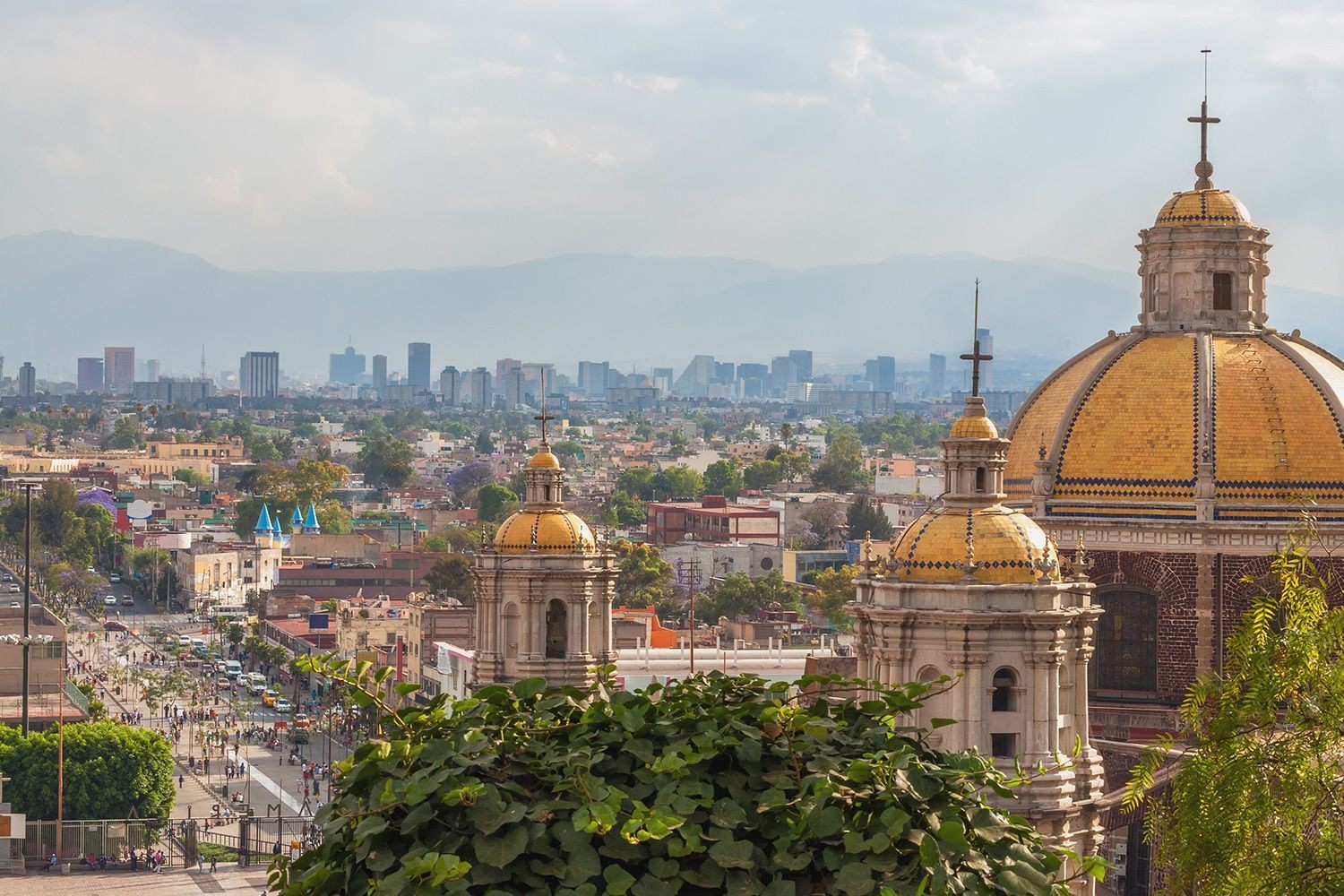
Explore the mystical pre-Columbian city of Teotihuacan, home to the awe-inspiring Pyramid of the Sun and the Pyramid of the Moon. Marvel at the remarkable murals of Diego Rivera at the Palacio Nacional and Palacio de Bellas Artes, showcasing Mexico's rich artistic heritage. Indulge in the culinary delights of the city, blending traditional flavors with modern flair.
With its diverse heritage and captivating sites, Mexico City's UNESCO World Heritage Sites offer an enchanting journey into the heart of Mexico's cultural legacy.
List of UNESCO World Heritage Sites in Mexico City, Mexico:
Historic Centre of Mexico City and Xochimilco:
This site encompasses the historic center of Mexico City, which showcases a blend of pre-Columbian, colonial, and modern architecture. It includes iconic landmarks such as the Metropolitan Cathedral, National Palace, and Templo Mayor. Xochimilco, a historic area known for its canals and floating gardens, is also part of this UNESCO site.
Luis Barragán House and Studio:
This site comprises the residence and studio of architect Luis Barragán, an influential figure in modern architecture. The property showcases Barragán's innovative design principles and his use of light, color, and space. It provides insights into his architectural vision and is a testament to his significant contributions to the field.
Central University City Campus of the Universidad Nacional Autónoma de México (UNAM):
The Central University City Campus of UNAM is a vast complex that exemplifies modernist architecture and urban planning. Designed in the mid-20th century, it showcases the work of renowned architects, including Mario Pani and Enrique del Moral. The campus features impressive buildings and open spaces, combining functional design with artistic and cultural elements.
Moscow, Russia:
Moscow, Russia, is home to several UNESCO World Heritage Sites, showcasing the city's rich history and cultural significance. The iconic Red Square, flanked by the majestic St. Basil's Cathedral and the historic Kremlin, is a must-visit destination. Discover the opulence of the Kremlin, a fortified complex that houses magnificent cathedrals and the official residence of the Russian President.
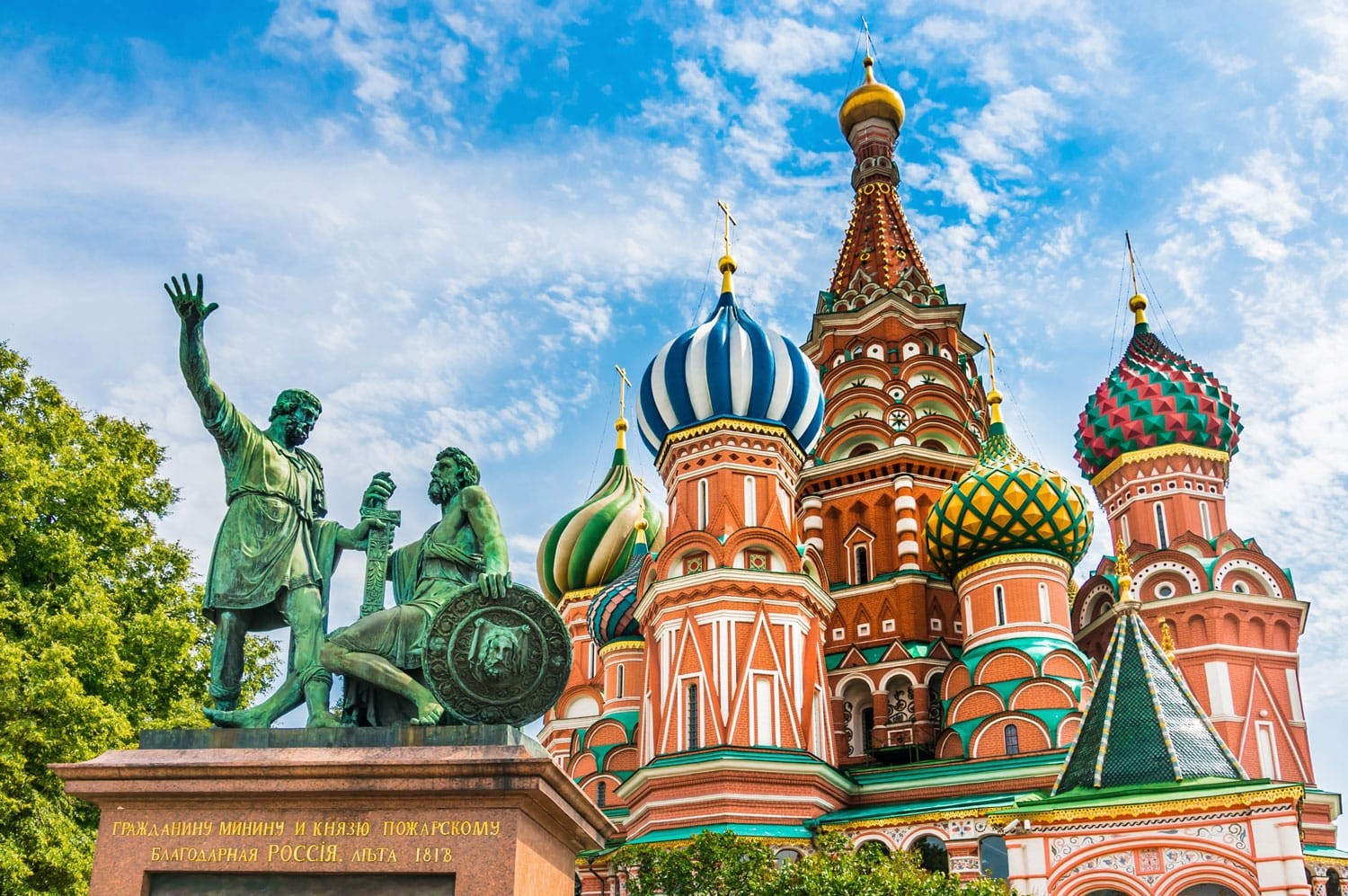
Take a stroll through the charming lanes of the Kitay-Gorod district, where ancient churches and merchant houses transport you to another era. Don't miss the Novodevichy Convent, a stunning architectural ensemble with a tranquil cemetery that holds the final resting places of famous Russian figures. Lastly, explore the breathtaking Church of the Ascension at Kolomenskoye, a masterpiece of white stone architecture surrounded by picturesque landscapes.
Moscow's UNESCO World Heritage Sites offer an unforgettable glimpse into the city's cultural heritage and are a testament to its enduring legacy.
List of UNESCO World Heritage Sites in Moscow, Russia:
01. Kremlin and Red Square:
Kremlin and Red Square: Located in Moscow, Russia, the Kremlin and Red Square are iconic symbols of Russian history and culture. The Kremlin is a fortified complex that houses several palaces, cathedrals, and government buildings. It served as the residence of the Russian rulers and is now the official residence of the President of Russia. Red Square is a large open square adjacent to the Kremlin and is famous for its historical and political significance, as well as its architectural landmarks such as St. Basil's Cathedral and the State Historical Museum.
02. Ensemble of the Novodevichy Convent:
Ensemble of the Novodevichy Convent: The Novodevichy Convent is a historic monastery located in Moscow, Russia. It is renowned for its architectural beauty and significance as a religious and cultural site. The ensemble includes the convent's main cathedral, dedicated to the Virgin of Smolensk, as well as several other churches, a bell tower, and other structures. The Novodevichy Convent played a significant role in Russian history and is considered an outstanding example of Moscow Baroque architecture.
03. Church of the Ascension, Kolomenskoye:
Church of the Ascension, Kolomenskoye: Situated in the Kolomenskoye district of Moscow, Russia, the Church of the Ascension is a remarkable architectural masterpiece. Built in the 16th century, it showcases traditional Russian wooden architecture and is known for its distinctive tent-roof design. The church is adorned with intricate carvings and vibrant colors, and its historical and cultural significance has made it a prominent UNESCO World Heritage Site.
Mumbai, India:
Mumbai, India, boasts a rich cultural tapestry, and it is home to several UNESCO World Heritage Sites. The majestic Chhatrapati Shivaji Terminus, a Victorian Gothic-style railway station, stands as an architectural masterpiece and a symbol of Mumbai's heritage. The Elephanta Caves, located on Elephanta Island in Mumbai Harbor, showcase ancient rock-cut temples dedicated to Lord Shiva, adorned with intricate sculptures.
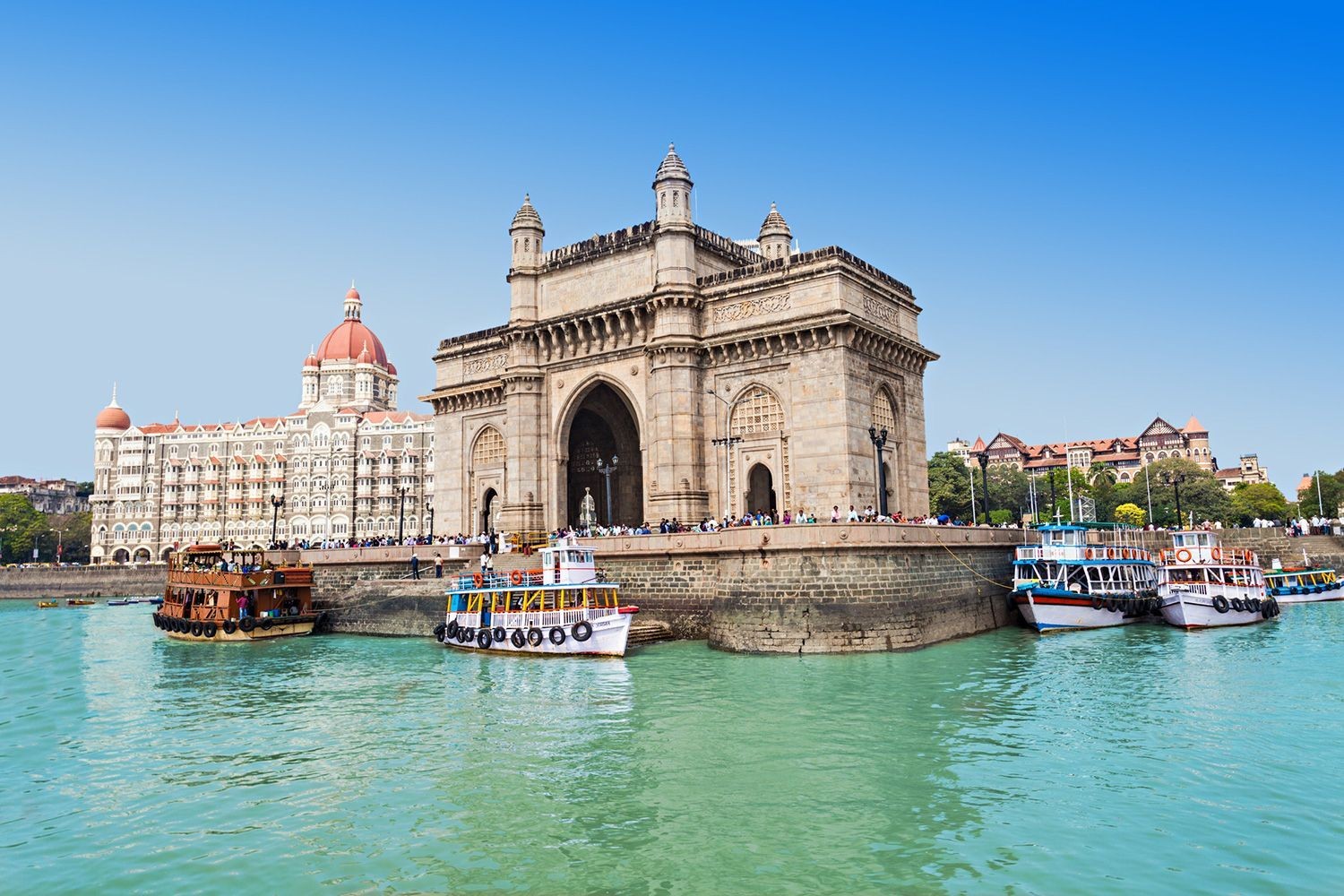
The iconic ensemble of Victorian and Art Deco buildings in the city's Fort area, known as the Victorian Gothic and Art Deco Ensemble of Mumbai, represents the city's cosmopolitan heritage. Exploring Mumbai's UNESCO World Heritage Sites provides a fascinating journey into the city's rich history and architectural marvels.
List of UNESCO World Heritage Sites in Mumbai, India:
01. Victorian Gothic and Art Deco Ensembles of Mumbai:
The Victorian Gothic and Art Deco Ensembles of Mumbai are a mesmerizing architectural blend that reflects the city's colonial past. The Victorian Gothic structures, dating back to the late 19th century, feature intricate carvings, pointed arches, and ornate facades. The Art Deco buildings, constructed in the 20th century, boast sleek lines, geometric patterns, and vibrant colors. Together, they create a striking contrast against the city skyline. This UNESCO World Heritage Site stands as a testament to Mumbai's rich architectural heritage and offers a captivating glimpse into its historical and cultural significance.
02. Chhatrapati Shivaji Terminus (Victoria Terminus):
Chhatrapati Shivaji Terminus, formerly known as Victoria Terminus, is a magnificent railway station in Mumbai. This architectural masterpiece combines Victorian Gothic and Indian architectural styles, creating a unique fusion of influences. Its impressive stone dome, turrets, pointed arches, and stained glass windows make it a visual delight. As a bustling transportation hub and a symbol of Mumbai's identity, the station showcases the city's architectural grandeur and serves as a remarkable example of Victorian railway architecture in India.
03. Elephanta Caves:
Situated on Elephanta Island in Mumbai's harbor, the Elephanta Caves are a collection of ancient rock-cut temples and sculptures. These caves, dating back to the 5th and 8th centuries, are dedicated to Lord Shiva and showcase exquisite craftsmanship. Intricate carvings depict various mythological stories and divinities, making it a significant pilgrimage site for Shaivism followers. The main cave, known as the Shiva Cave, features a colossal three-headed Shiva sculpture, a true marvel of ancient Indian art. The Elephanta Caves offer a captivating journey into India's rich cultural and religious heritage.
New Delhi, India:
New Delhi, the capital city of India, is a treasure trove of UNESCO World Heritage Sites that reflect the city's historical and cultural significance. The iconic Red Fort, a magnificent Mughal fortress, stands as a testament to India's rich architectural heritage. Its impressive walls, intricate marble work, and majestic gates take visitors back to the era of Mughal grandeur.
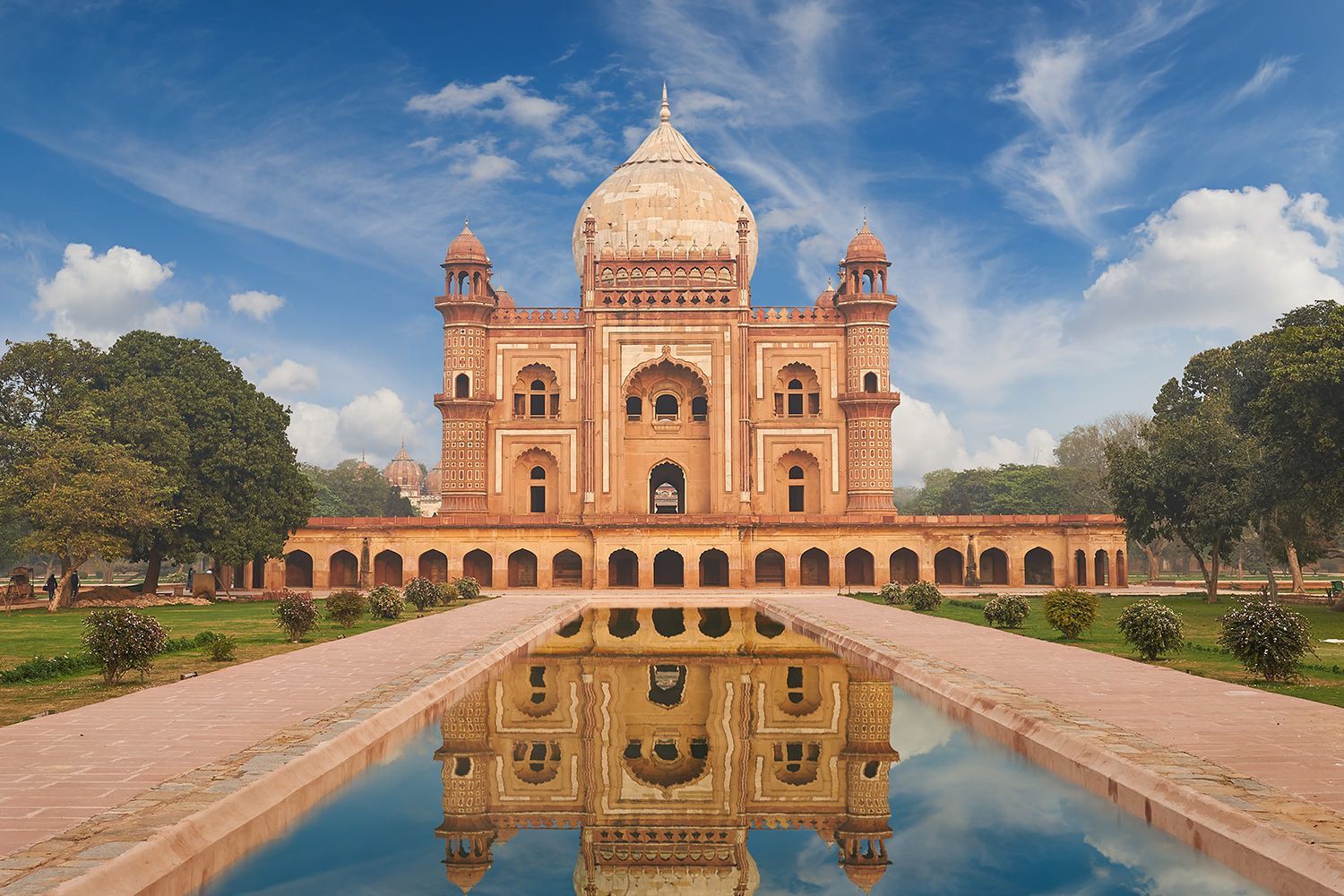
The Qutub Minar, a towering minaret built in the 12th century, showcases exquisite Islamic architecture and intricate carvings. Another UNESCO site, the Humayun's Tomb, is a masterpiece of Persian and Mughal architecture, serving as the final resting place of Mughal Emperor Humayun.
The complex's grandeur and beautiful gardens create a serene and captivating ambiance. Lastly, the Jantar Mantar, an astronomical observatory, offers unique architectural structures that were once used to study celestial bodies. Exploring these UNESCO World Heritage Sites in New Delhi is a journey through time, unveiling the city's vibrant history and cultural heritage.
List of UNESCO World Heritage Sites in New Delhi, India:
01. Red Fort Complex:
The Red Fort Complex in Delhi is an iconic UNESCO World Heritage Site that encapsulates the magnificence of the Mughal era. Constructed with red sandstone, this historical masterpiece showcases a fusion of Persian, Indian, and European architectural styles. The complex encompasses stunning palaces, enchanting gardens, and notable structures like the Diwan-i-Khas and Diwan-i-Aam. Visitors can marvel at the intricate marble inlays, captivating artwork, and the vibrant sound and light show that brings history to life.
02. Humayun's Tomb, Delhi:
Humayun's Tomb, located in Delhi, is a splendid mausoleum and a testament to the grandeur of Mughal architecture. This UNESCO World Heritage Site was built in the 16th century and serves as the final resting place of Emperor Humayun. Surrounded by lush gardens, the tomb features intricate marble lattice work, impressive domes, and a symmetrical design. It served as an inspiration for the Taj Mahal and is a must-visit destination for its serene ambiance and historical significance.
03. Qutb Minar and its Monuments, Delhi:
The Qutb Minar and its Monuments in Delhi comprise a remarkable ensemble of historical structures. The centerpiece is the towering Qutb Minar, a magnificent brick minaret that stands at a height of 73 meters. This UNESCO World Heritage Site also includes the intricately carved Quwwat-ul-Islam Mosque, the Alai Darwaza gate, and the Iron Pillar of Delhi, known for its rust-resistant metallurgy. Exploring this architectural marvel allows visitors to delve into the rich history of the Delhi Sultanate and appreciate the exquisite craftsmanship of the era.
Berlin, Germany:
Uncover the hidden gems of Berlin, Germany, as you embark on a thrilling expedition through its mesmerizing UNESCO World Heritage Sites. Prepare to be awestruck by Museum Island, where ancient artifacts and captivating stories come to life in extraordinary museums. Step into a world of architectural brilliance at the Berlin Modernism Housing Estates, where visionary designs redefined urban living.
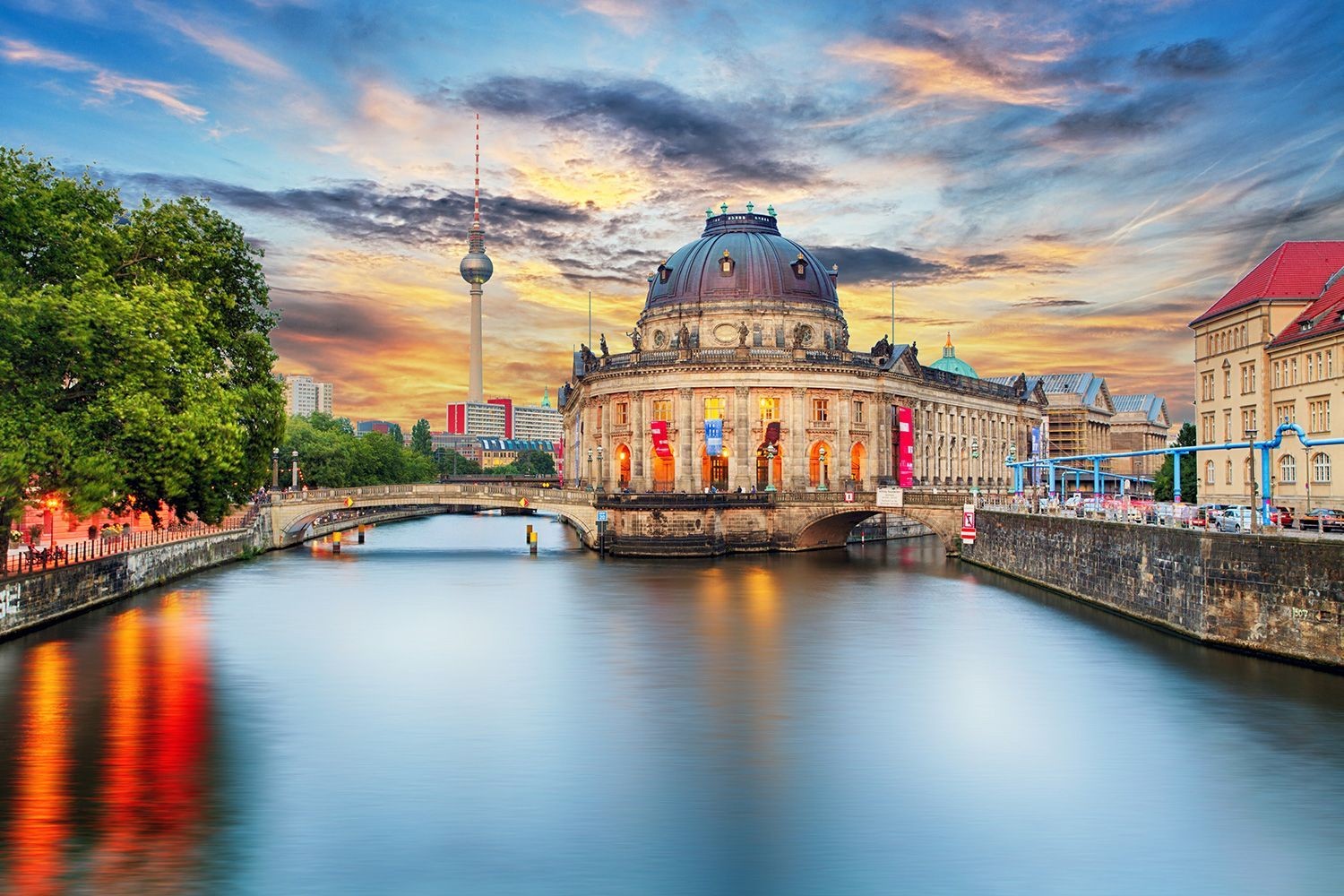
Trace the footsteps of history along the remnants of the Berlin Wall, a powerful symbol of resilience and unity. Lose yourself in the enchanting allure of Sanssouci Palace, surrounded by breathtaking gardens that transport you to a bygone era of regal splendor.
Experience the solemn echoes of the Sachsenhausen Concentration Camp Memorial, a haunting testament to humanity's strength in the face of darkness. Brace yourself for an unforgettable journey through time, where Berlin's UNESCO World Heritage Sites beckon with untold wonders and profound tales of the past.
List of UNESCO World Heritage Sites in Berlin, Germany:
01. Palaces and Parks of Potsdam and Berlin:
Palaces and Parks of Potsdam and Berlin: The Palaces and Parks of Potsdam and Berlin offer a mesmerizing journey through Prussian history. From the opulent Sanssouci Palace and its stunning terraced gardens to the magnificent Charlottenburg Palace, these UNESCO World Heritage Sites immerse visitors in the splendor of royal residences. The vast parklands, adorned with sculptures and picturesque lakes, provide a tranquil escape from city life. Explore the New Palace, the Orangery Palace, and the Babelsberg Palace, each showcasing unique architectural styles and captivating interiors. The Palaces and Parks of Potsdam and Berlin offer an unforgettable glimpse into the rich cultural heritage of Germany.
02. Berlin Modernism Housing Estates:
Berlin Modernism Housing Estates: The Berlin Modernism Housing Estates are a testament to the innovative architectural movement of the early 20th century. Designed as a response to the housing crisis, these estates exhibit functional yet aesthetically pleasing apartment buildings. Iconic sites like the Hufeisensiedlung (Horseshoe Estate) and the Wohnstadt Carl Legien (Carl Legien Housing Estate) feature clean lines, spacious courtyards, and communal green spaces. The architecture harmonizes with nature and prioritizes the well-being of residents. Immerse yourself in the spirit of progressive urban planning and experience the legacy of Berlin's modernist architectural heritage.
03. Museumsinsel (Museum Island), Berlin:
Museumsinsel (Museum Island), Berlin: Nestled in the heart of Berlin, Museumsinsel, or Museum Island, is a cultural paradise. This UNESCO World Heritage Site is home to five world-class museums, each showcasing unique collections. Discover ancient wonders at the Pergamon Museum, marvel at classical masterpieces at the Altes Museum, and explore Egyptian artifacts at the Neues Museum. The Bode Museum offers a rich display of sculptures and Byzantine art, while the Alte Nationalgalerie houses an impressive collection of European paintings. With its rich historical significance and diverse exhibitions, Museumsinsel is a must-visit destination for art and history enthusiasts alike.
Bruges, Belgium:
Bruges, Belgium, is home to a number of UNESCO World Heritage Sites that showcase the city's rich history and architectural beauty. Prepare to be transported to a bygone era as you uncover the UNESCO World Heritage Sites nestled within the charming city of Bruges, Belgium. With its cobblestone streets and medieval allure, this enchanting destination is a living testament to the past.
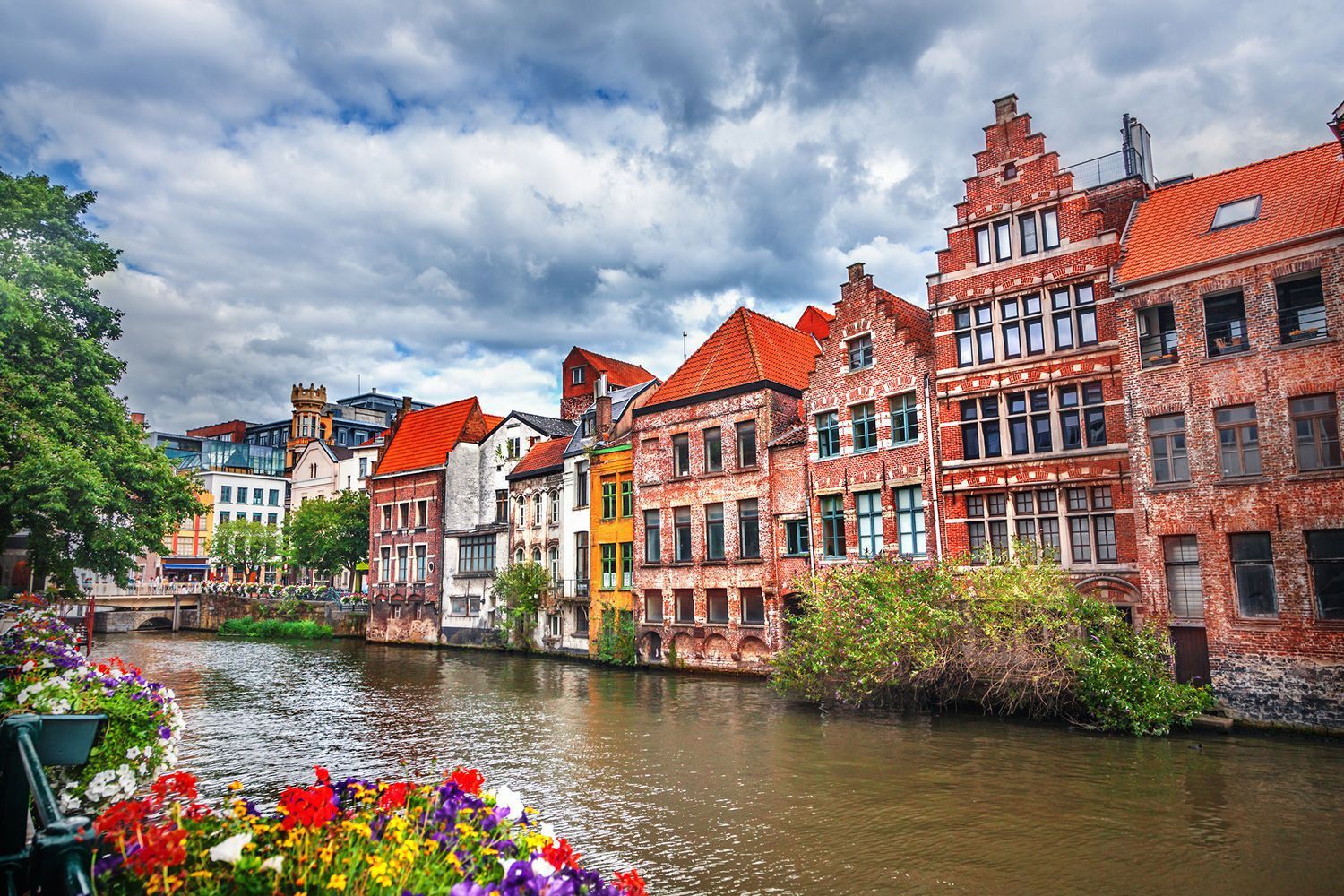
Ascend the majestic Belfry Tower, a sentinel of history that grants you a mesmerizing panorama of the city below. Wander through the labyrinthine lanes, where meticulously preserved medieval architecture tells tales of a bygone era. Immerse yourself in the ethereal beauty of the Church of Our Lady, where Michelangelo's masterpiece, the Madonna and Child, resides.
Seek solace within the beguiling Beguinage, an idyllic sanctuary boasting serene gardens and whitewashed abodes. Bruges, with its UNESCO distinction, beckons adventurers and culture enthusiasts to step into a world suspended in time. Unveil the timeless enchantment of this Belgian gem and etch indelible memories in your heart.
List of UNESCO World Heritage Sites in Bruges, Belgium:
01. Historic Centre of Brugge:
The Historic Centre of Brugge is a captivating UNESCO World Heritage Site that transports visitors to the medieval era. This well-preserved city boasts charming cobblestone streets, picturesque canals, and stunning Gothic architecture. Explore the Markt Square, lined with colorful buildings and bustling with activity. Admire the intricate facades of the city's historic houses and visit the charming Beguinage, a tranquil retreat for religious women. Don't miss the opportunity to savor delicious Belgian chocolates and indulge in a boat ride along the scenic canals.
02. Belfry of Bruges:
The Belfry of Bruges is an iconic symbol of the city, rising majestically above the historic center. Climb the 366 steps to the top for panoramic views of Bruges' medieval beauty. Inside, discover a fascinating collection of historical artifacts and admire the impressive carillon that chimes throughout the day, adding a melodious charm to the city.
03. Our Lady's Church:
Our Lady's Church, a magnificent Gothic masterpiece, showcases a breathtaking collection of art and religious treasures. Marvel at Michelangelo's exquisite sculpture, the Madonna and Child, and explore the beautifully adorned chapels within. The church's towering spire is a prominent feature on Bruges' skyline.
04. Groeningemuseum:
The Groeningemuseum is a must-visit for art enthusiasts. This museum houses a remarkable collection of Flemish and Belgian art spanning several centuries. Admire masterpieces by renowned artists like Jan van Eyck, Hieronymus Bosch, and Hans Memling, among others. The museum's diverse collection offers a fascinating glimpse into the region's rich artistic heritage.
05. Beguinage of Bruges:
The Beguinage of Bruges provides a serene escape from the bustling city. This tranquil enclave features charming whitewashed houses and tranquil gardens. Step into the peaceful Beguinage Chapel and learn about the history and way of life of the beguines, a unique religious community. Enjoy a serene walk through the gardens and experience a sense of tranquility in this idyllic retreat.
London, United Kingdom:
London, the capital of the United Kingdom, is home to several UNESCO World Heritage Sites. These iconic landmarks showcase the city's rich history and cultural significance. The Tower of London, with its medieval fortress and crown jewels, stands as a symbol of power and intrigue.
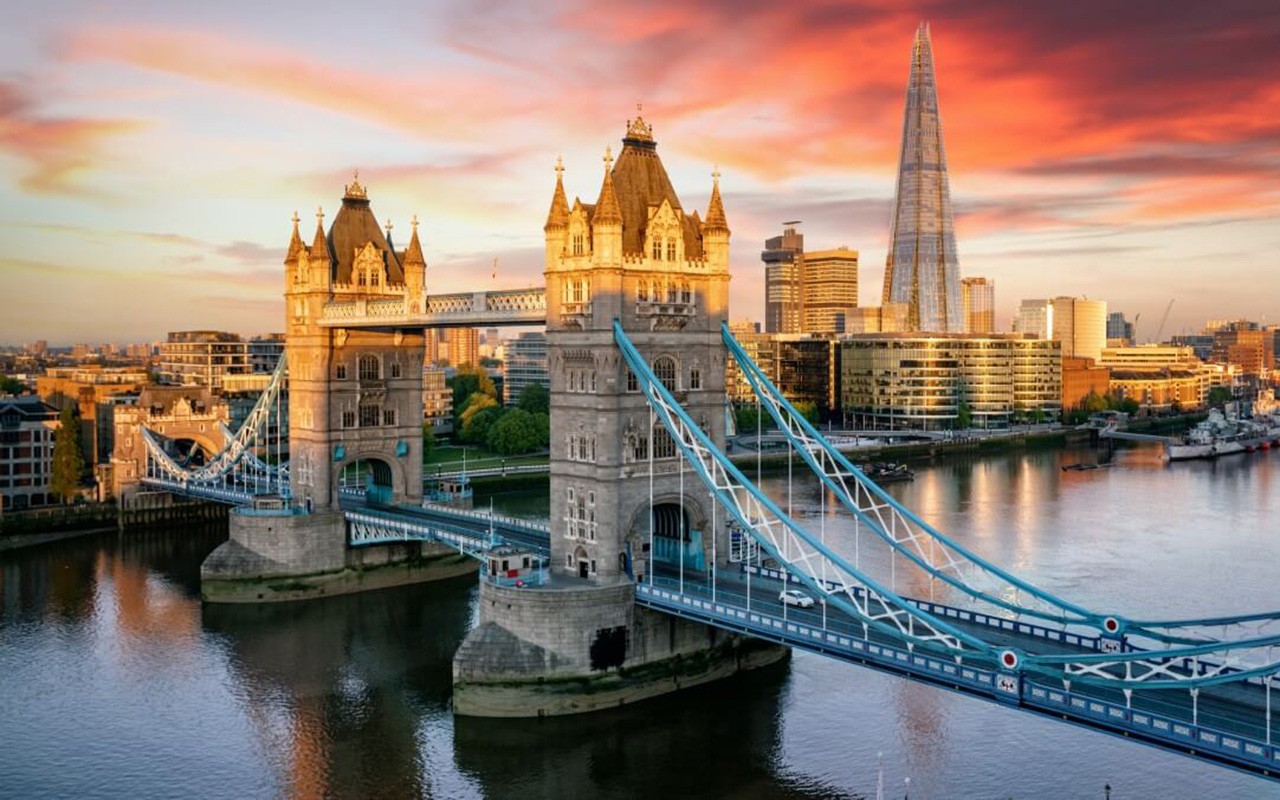
The historic settlement of Greenwich, known for the Royal Observatory and the Prime Meridian, offers breathtaking views of London's skyline. The majestic Palace of Westminster, housing the iconic Big Ben, is an architectural marvel. The Royal Botanic Gardens, Kew, dazzle visitors with their stunning landscapes and diverse plant collections. Additionally, the site of Maritime Greenwich highlights London's maritime heritage.
These UNESCO World Heritage Sites in London are not only visually captivating but also provide valuable insights into the city's past, making them must-visit destinations for history and culture enthusiasts.
List of UNESCO World Heritage Sites in London, United Kingdom:
01. Royal Botanic Gardens, Kew:
The Royal Botanic Gardens in Kew, London, is a botanical paradise spanning over 300 acres. It boasts an extraordinary collection of plants from around the world, including rare and endangered species. Visitors can explore stunning gardens, glasshouses, and even a treetop walkway. Kew Gardens is not only a beautiful retreat but also a center for botanical research and conservation.
02. Palace of Westminster and Westminster Abbey including Saint Margaret’s Church:
The Palace of Westminster and Westminster Abbey, located in the heart of London, are iconic symbols of British history and architecture. The Palace of Westminster houses the Houses of Parliament and the famous Big Ben clock tower. Nearby, Westminster Abbey is a magnificent medieval church where coronations, royal weddings, and burials have taken place for centuries. Saint Margaret's Church, adjacent to Westminster Abbey, is a charming historic church worth exploring.
03. Tower of London:
The Tower of London stands proudly on the banks of the River Thames, guarding over a thousand years of history. This historic castle has served as a royal palace, a prison, and even a treasury. Visitors can marvel at the Crown Jewels, walk the ancient walls, and discover the tales of its famous residents, including monarchs and famous prisoners. The Tower of London offers a fascinating glimpse into England's rich and sometimes dark past.
04. Maritime Greenwich:
Maritime Greenwich, located in southeast London, is a captivating UNESCO World Heritage Site. It encompasses significant landmarks, including the Royal Observatory, the Queen's House, the Old Royal Naval College, and the beautiful Greenwich Park. This area played a pivotal role in maritime history and was the reference point for Greenwich Mean Time (GMT). Visitors can explore the museums, admire the stunning architecture, and enjoy breathtaking views of London from Greenwich Park. Maritime Greenwich is a must-visit destination for history enthusiasts and those seeking a glimpse into Britain's seafaring heritage.
Suggested to Read: 100 Most Famous & Beautiful UNESCO World Heritage Sites
Embarking on a journey to explore the cities with the highest number of UNESCO World Heritage Sites is like diving into a time capsule of human history and cultural magnificence. From the sprawling wonders of Beijing and Córdoba to the condensed treasures of Rome and Mexico City, these destinations offer an immersive experience like no other. Each site stands as a testament to the beauty, ingenuity, and significance of our collective heritage. Whether you're a history enthusiast, a cultural explorer, or simply a lover of breathtaking landmarks, these cities beckon with open arms, ready to transport you to a world where the past intertwines seamlessly with the present. Discover, marvel, and cherish these UNESCO gems as windows into our shared human story.




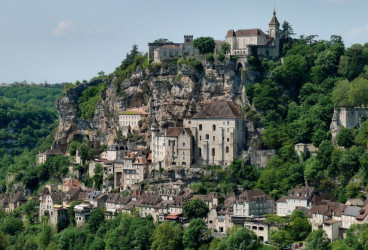







{{item.get_author.first_name}} {{item.get_author.last_name}}
Level 7
5 Photos
36 Reviews
{{item.comment_txt}}
{{item_reply.get_author.first_name}} {{item_reply.get_author.last_name}}
@ {{item_reply.reply_to}}, {{item_reply.reply_txt}}